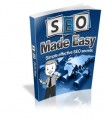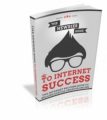Salespage Snapshot:

Table of Contents
Introduction Introduction IntroductionIntroductionIntroduction ….. 5
Chapter 1 – Discover How Activity Promotes Longevity . 7
Chapter 2 – The History of Pilates ….. 11
Chapter 3 – What exactly is Pilates? Should I be doing it? .. 15
Chapter 4 – The Benefits of Pilates …. 17
Control …. 17
Focus/Concentration …. 20
Fluidity in Movement … 20
Strong Core …. 21
Deep Breathing ….. 22
Better Muscle Tone 22
Improved Balance and Flexibility ….. 23
Chapter 5 – Steps Before Beginning Pilates …. 25
Consult a Doctor … 25
Find a Good Instructor . 26
Be Patient 27
Be Consistent . 27
Choose the Right Centre …. 28
Dress Comfortably & Eat Light .. 28
Always Use a Mat .. 29
Chapter 6 – What to Expect in a First Session . 30
Chapter 7 – 4 Fantastic Pilates Moves To Do .. 33
The Hundred … 33
Spine Twist …. 34
Side Kick .. 35
Leg Pull Front . 36
Chapter 8 – Avoiding Common Pitfalls ….. 38
1. Not breathing correctly . 38
2. Not sucking in the abdominals … 39
3. Rushing through the moves . 39
Lack of control / Too much momentum ….. 41
Chapter 9 – Making Exercise/Pilates Part of Lifestyle …. 43
Advanced Chapter – Taking Things Up a Notch ….. 46
Use a Reformer ….. 46
Use Resistance Bands and Swiss Balls …. 47
Conclusion 48
Sample Content Preview
Chapter 3 – What Exactly Is Pilates? Should I Be Doing It?
Most seniors assume that they are too old to exercise. The truth of the matter is that you don’t stop exercising because you grow old, but you grow old because you stop exercising.
Pilates is the complete coordination of mind, body and spirit. As you age, it will help you to take care of your body and strengthen it. After all, it’s the only place you have to live in.
Joseph used to say, “Take care of your body. Physical fitness can neither be achieved by wishful thinking nor outright purchase.”
This is very true. If you want good health, you definitely need to do Pilates. Old and young alike will benefit from it.
You may have noticed that many older people tend to be hunched over and have difficulty moving around. On the other hand there are other seniors who are well and capable of getting around easily. This is due to the strength of the midsection and back muscles. Usually, older people have weaker back muscles and this leads to back pain. Since the back muscles are weak, posture is compromised and they hunch.
The hunched posture places more stress on the spinal column which leads to even more pain. This is a vicious cycle that must be broken. One of the best ways to do this will be to use Pilates to strengthen the back muscles and also the midsection. Balance is crucial in Pilates.
If you want to feel young, energetic and free of pain, you need Pilates. It will tone your body and you will age gracefully. While you may not be young enough to do sprints at the running track, this is no reason to give up on exercise. Get started with Pilates and feel the difference.
“Do not let what you cannot do interfere with what you can do.”
Chapter 4 – The Benefits of Pilates
There are a plethora of benefits that can be derived from engaging in Pilates sessions regularly. Most of the benefits come about because of the principles of Pilates.
Let’s look at the different principles and see how they benefit you.
Control
A ton of emphasis is placed on control. You’ll never see a Pilates session where people swing around wildly. Pilates is all about slow, controlled movements. Joseph Pilates called it contrology and this is what he had to say about it.
“Contrology is designed to give you suppleness, natural grace, and skill that will be unmistakably reflected in the way you walk, in the way you play, and in the way you work.”
So how does contrology benefit you?
If you look at one of the Pilates moves known as the ‘Bridge with single leg’… you’ll be asked to lie flat on the floor with your legs bent and the feet on the floor.
You’ll then be asked to slowly extend one leg at a 45 degree angle. Once this is done, you’ll need to curl and raise your hips upwards till it is in line with your shoulders and knees. You’ll then lower and raise your hips a couple of times. After that, you’ll repeat the move with the other leg.
What this exercise does is it works your glutes, hamstring and abdominal muscles. You will be required to engage your core muscles to maintain good balance.
The slow controlled movement will mean that your muscles actually feel the tension and the entire body is working as a whole. You can’t do this move in a bouncy, dynamic manner or you might end up needing a hip replacement.
Slow and steady is the way. While it may seem easy to execute, you’ll be surprised to find that it’s a lot more challenging than it sounds. Your muscles may quiver and there may be a mild burning sensation while your muscles are engaged. You’ll feel relief when you relax.
The slow movement recruits more muscle fibers and also allows you to focus… which brings us to the next point.
Focus/Concentration
You absolutely must concentrate and focus on the move when you’re executing it. This is the mind-body connection that Pilates strives for. You’ll need to clear your mind about the daily worries, activities, etc. and focus solely on the exercise.
This improves concentration. Many older people find themselves getting forgetful as they age. Pilates will help them improve brain function and memory. You’ll also be required to visualize the movement in your mind before executing it. This improves your imagination too.
Fluidity in Movement
Since you’ll need to be fluid in your movements during your Pilates sessions, the muscles in your body will develop ‘muscle memories’.
That means the fluid movements done during your sessions will translate to fluid movements during your day to day activities. You will be fluid when you walk, move, stand, etc. Your body has been conditioned to move efficiently. No more poor posture, abrupt movements that may cause sudden sprains or pulls, etc. that will cause you pain.
Strong Core
Pilates focuses most of its movements on the body’s midsection which it terms as the ‘powerhouse’. Joseph Pilates believed that if the core was strong, most of the ailments in the body could be healed.
He is right. Many people who get started on Pilates struggle with the moves initially because the core is neither strong enough nor is it conditioned to work in that manner. In fact, even bodybuilders with bulging biceps struggle to execute some of the Pilates moves because core training is usually neglected by most people which explains why so many people experience strains and aches.
Other Details- 5 Articles (TXT)
- 1 Ebook (PDF), 49 Pages
- 12 Audios (MP3)
- 12 Videos (MP4)
- 10 Graphics (JPG, PNG)
- 2 Salespages (HTML)
- 18 Promotional Ad Materials (Emails, Banners)
- 4 Keywords List (EXCEL, DOC, PDF)
- Report, Social Media, Flip Ebook, Infographic, Banner
- Year Released/Circulated: 2016
- File Size: 102,241 KB
License Details:
[yes] can be used for personal use.
[yes] can be given to list subscribers.
[yes] can be packaged with other products.
[yes] can be offered as a bonus.
[yes] can be edited and your name put on it.
[yes] can be used as web content.
[yes] can be be broken down into smaller articles.
[yes] can be added to an e-course or autoresponder.
[yes] can be submitted to article directories.
[yes] can be added to paid membership sites.
[yes] can be added to an eboook/Pdf as content.
[yes] edit the salesletter any way you want.
[yes] can sell resale rights.
[yes] can be can sell master resale rights.
[NO] can sell PLR rights.
[NO] cannot give away PLR Rights.














